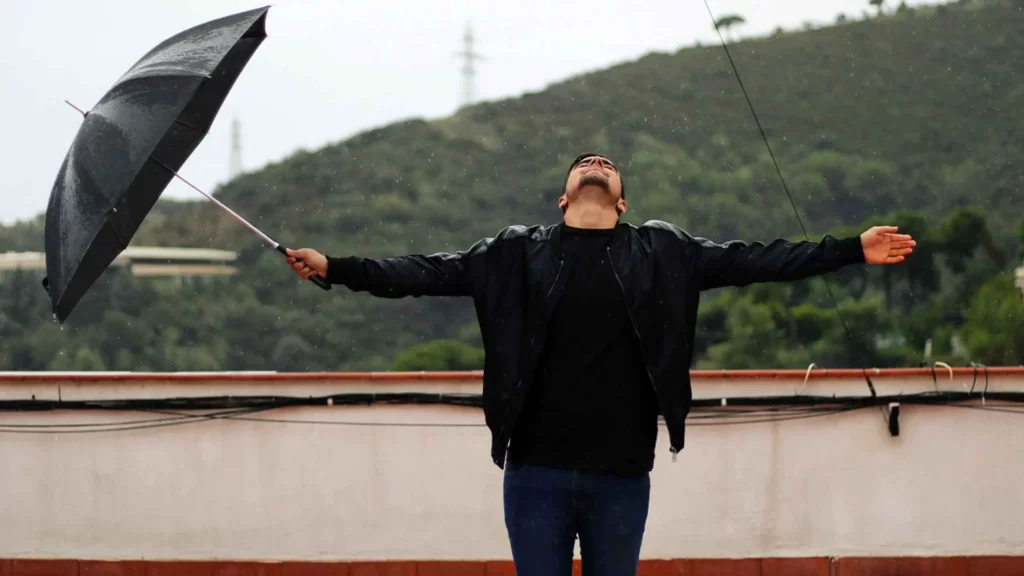Leather jackets have traditionally held an influential place in fashion when it comes to chic outerwear. These vintage outfits have a traditional coolness and toughness about them especially for rebellious mindsets. But among fans of leather clothing, a frequent query is, “Are leather jackets waterproof?”. In this article, we examine the properties of leather and offer tips on how to keep your leather jacket dry and protective when it’s wet.
Understanding Leather and Waterproof
It may be confusing for you about what each label means because people frequently use terms like “waterproof” and “water resistant” when discussing leather jackets. In a nutshell, “water resistant” refers to a material’s capacity to partially, if not totally, withstand water penetration. However, in a technical sense, something that is “waterproof” is impenetrable regardless of how long it is submerged in water.
Although leather has some inherent water resistance, it doesn’t mix well with water. This is acceptable if it gets wet in little amounts (like a light rain), but natural animal leather is porous, so it will never be completely waterproof. Leather has some moisture resistance thanks to the solid framework of animal hides and the tanning procedure.

Water Resistance of Different Types of Leather
Though we’ve talked about leather and its level of water resistance generally up to this point, the truth is that it varies based on the type of leather. The particular treatment the leather undergoes can also have an impact. Here are some popular leather types along with details about how water-resistant they are:
| Leather Type | Water Resistance | Explanation |
|---|---|---|
| Full-Grain Leather | Good to Excellent | Full-grain leather, the highest quality leather, has a dense and tight structure that offers good water resistance. It has not been sanded or buffed, preserving its natural grain. It may also have natural oils that repel water. |
| Top-Grain Leather | Good | Top-grain leather has a similar structure to full-grain leather but has been lightly sanded or buffed to remove imperfections. While it maintains good water resistance, it may be slightly less resistant than full-grain leather. |
| Corrected Grain | Fair to Good | Corrected grain leather undergoes more extensive sanding or buffing to remove surface imperfections. This process can reduce its water resistance compared to full-grain or top-grain leather, but it may still offer fair to good resistance depending on the treatment and finishing. |
| Suede Leather | Poor | Suede leather is made from the inner side of the hide, which has a soft and fuzzy texture. Due to its open and porous nature, suede leather is more susceptible to water absorption and has poor water resistance. Waterproofing measures can help mitigate this. |
| Nubuck Leather | Poor | Nubuck leather is similar to suede leather, as it is made from the outer side of the hide but with a finer grain. Like suede, nubuck leather is porous and lacks natural water resistance, making it less suitable for wet conditions. Proper care and waterproofing can help improve its resilience. |
| Patent Leather | Poor | Patent leather is a glossy, coated leather that has been treated with a plastic or lacquer finish. This coating creates a non-breathable surface that makes it less water-resistant compared to other leather types. It is more prone to water spots and can be easily damaged by excessive moisture. |
| Exotic Leather (e.g., alligator, snake) | Varies | The process of sanding or buffing corrected grain leather extensively to remove surface imperfections reduces its water resistance compared to full-grain or top-grain leather, but it can still offer fair to good resistance depending on the treatment and finishing. |
How Your Leather Jacket Will React to Water?
Your leather jacket is no different from other materials because it responds to moisture. However, different leathers respond to water in various ways. The Suede is manufactured from the belly of animals and has a napped finish. It has a velvety feel as a result of that. It is therefore easily damage if it comes into contact with water. To ensure the preservation of suede, it is advisable to avoid exposing it to rain, particularly in the case of anticipated heavy downpours.
Your jacket will last much longer if it is full-grain or top-grain leather. Given that these are high-quality leathers, this is not surprising. Although the price may be more, you are paying for high-quality goods. These leathers are more resistant to the elements, just like animals themselves. Although they are resilient, you still need to take care of your jacket. It could subtract years from the lifespan of your leather jacket.
As water evaporates, it actively bonds to the oils in leather while it is wet and actively draws them out. Additionally, it moves the dyes about, resulting in blotches, streaks, and damage to an even, smooth color. As a result, the leather may become patchy and discolored, stiff, and even broken. It may also lose its suppleness. Leather may start to rot if the water does not evaporate quickly enough.
Maintaining Water Resistance of Leather Jackets
There are steps you can take to maintain your leather jacket’s water resistance and protect it from water damage, even though it may not be entirely waterproof:
Applying Water Proofing Products
Applying a waterproofing or leather protectant spray can assist improve the jacket’s ability to repel water. By forming a protective layer on the leather’s surface, these chemicals limit moisture absorption.
Proper Drying
It’s important to let your wet leather jacket air dry naturally at room temperature. Don’t use Hairdryers and heaters directly since they might cause the leather to crack or shrink.
Conditioning
Regular conditioning can increase the suppleness and water resistance of your leather jacket. Products for conditioning leather nourish the substance, keeping it moisturized and less prone to cracking.
Waxing
Make sure the leather is dry and clean before applying wax. Apply a small amount of wax on a clean cloth and gently rub it into the leather surface. Keep repeating this step as necessary until you achieve a satisfactory outcome. You should let the leather air dry naturally after applying wax. Keep it away from sources of heat since too much heat can destroy the leather and produce cracks. Take another clean cloth and buff off the wax once it has completely dried.
Final Thoughts
So, are leather jackets waterproof? In conclusion, leather jackets are somewhat water resistant by nature but not entirely waterproof. Their capacity to withstand moisture depends on the type of leather, tanning techniques, and additional treatments. However, with proper maintenance, care, and application of safety precautions, you can extend your leather jacket’s water resistance and take advantage of its timeless style even in damp environments. Keep in mind to refer to the manufacturer’s instructions and seek expert advice if you have specific questions concerning your leather jacket. Whether it’s raining or shining, embrace the distinct personality and charm of your leather jacket and take pleasure in its enduring attraction.

